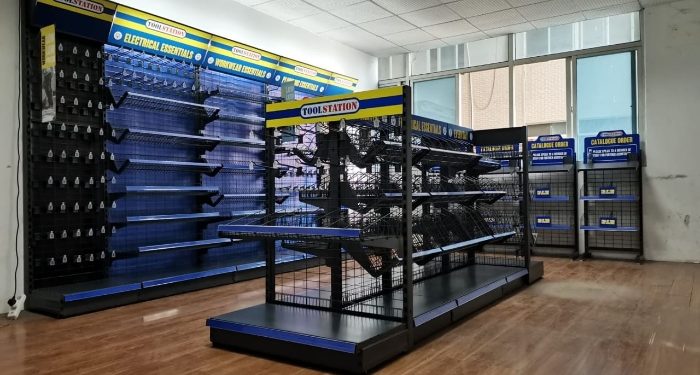Introduction:
Store fixtures assume a basic part in the speedy retail business, where shopper inclinations are continuously changing, and rivalry is wild. These apparently little parts of the retail climate essentially affect how purchasers view the store, how they pick what to purchase, and whether a retail firm eventually succeeds or comes short. Store fixtures are crucial for companies trying to maximize space utilization and aesthetic appeal to draw in and keep customers in a very competitive market.
Basically, the essential target of store fixtures is to make a charming environment that tempts clients to peruse and make buys as well as to exhibit things in an eye-getting way. These fixtures, which may be item stands, show retires, or clothing racks, are painstakingly intended to orchestrate and introduce things in an engaging way. Via cautiously picking how things are put and introduced, retailers might draw in individuals, feature key items, and lift deals.
Upgrading space use in retail respect is one of the fundamental reasons for store fixtures. In an actual retail setting where each square foot matters, capitalizing on accessible space is urgent to the main concern. Retailers might show an enormous assortment of things without overpowering the store or degrading the in-store shopping experience thanks to very much planned apparatuses. Using gondolas, wall shows, and racking units, retailers might utilize vertical space to introduce a more noteworthy assortment of items in a flawless and methodical setting.
Additionally, store fixtures are essential to retail branding and identity creation. The fixtures’ style, composition, and visual appeal all influence the store’s atmosphere and reputation. Customers can understand a brand’s identity and ideals by looking at fixtures such as rustic wooden shelves or sleek and modern display cases. When fixtures are used consistently throughout a chain of stores, customers feel more acquainted with and trusting of the brand.
Store fixtures have useful purposes in addition to being aesthetically pleasing, which improves the client shopping experience. For instance, strategically positioned product displays and signage make it easier for customers to find what they’re looking for quickly and to traverse the business. Customers may interact directly with items through interactive displays and demonstration stations, creating a more engaging and memorable shopping experience.
Store fixtures have a big influence on sales success in addition to their aesthetic and practical features. Well-executed merchandising strategies, supported by fixtures positioned strategically, can stimulate impulsive buys and upsell. For example, grouping related products together or putting up themed displays may encourage buyers to spend more than they had planned to. Retailers may employ store fixtures to boost average transaction value and create demand by utilizing the psychology of consumer behavior.
Store fixtures are also quite important for marketing campaigns and seasonal promotions. Seasonal displays, promotional posters, or holiday decorations—fixtures offer a flexible way to highlight exclusive deals and boost sales during specific periods. Retailers may generate a feeling of urgency and excitement that motivates customers to return and strengthens their brand loyalty by routinely upgrading and revamping shop fixtures to correspond with seasonal themes and trends.
In the current multichannel deal’s world, where on the web and disconnected shopping encounters are turning out to be progressively connected, store fixtures are basic to overcoming any barrier among physical and advanced stages. Intelligent booths, computerized signage, and QR code shows are a couple of instances of how innovation might be coordinated into store installations to upgrade the shopping experience and give clients admittance to more item subtleties, surveys, and internet buying choices.
Conclusion:
To sum up, store fixtures are essential tools for merchants looking to design captivating and engaging shopping environments that increase revenue and cultivate a loyal client base. These adaptable components enhance branding and merchandising strategies, maximize space utilization, and shape the success of retail firms in a cutthroat industry. Retailers may stand out from the competition, draw in consumers, and eventually prosper in the dynamic retail environment by making investments in well-designed and thoughtfully placed fixtures.











































































